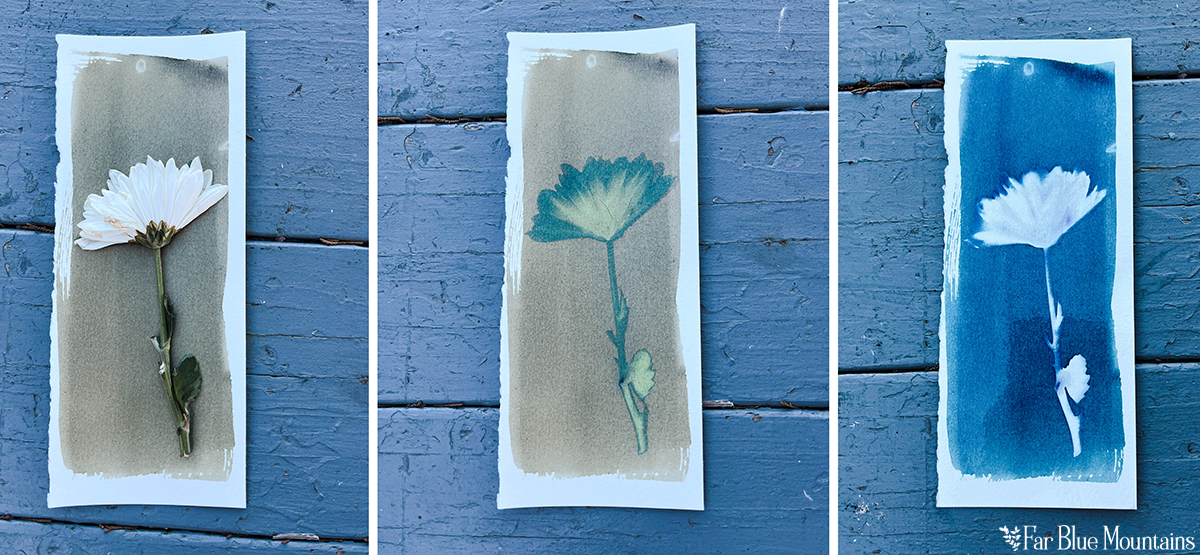WHAT IS A CYANOTYPE PRINT?
The alchemist huddled over the old wooden table in her dim study, lit only by the slightest flicker of candlelight. Carefully she measured the precise amount of chemicals and poured them into the mixing dish, where they swirled with the concoction already there. After giving it a few stirs for good measure, she dipped a paintbrush into the mixture and began to coat paper and fabric with the yellow potion. Once complete she gingerly laid the materials aside to dry in the darkness, ready for the next day when they would reveal their true colors with sunlight and water.
Or at least that’s what I feel like when making cyanotype prints.
These blue and white images always give me a sense of magic when I’m creating them. Maybe it has to do with the way the colors change from yellow to light gray to Prussian blue in the water. Or maybe it’s because you have to do a bit of chemistry to make sure the light sensitive solution is mixed properly. Or the fact that bits of nature are used to create the shapes. But there’s no denying I feel like I’m doing just a tiny bit of alchemy when exploring this historic photography method.
SO WHAT EXACTLY IS A CYANOTYPE?
The cyanotype process (also called alternative process or sun printing) is a way of making cyan blue colored images. The process was first created by English scientist and astronomer Sir John Herschel in 1842 as a way to reproduce notes. It was use by architects and engineers to cheaply reproduce diagrams. In fact, this is where the term blueprint comes from! But the credit goes to Herschel’s friend, Anna Atkins, for using this process to create and publish photographs.
Both a botanist and photographer, Anna Atkins used the cyanotype process to document ferns, algae, and other plant life in beautiful blue and white silhouetted images. She published these images in several books and is considered both the first woman photographer and the first person to publish a book illustrated with photographs. She’s really the one who made this process an art form.
Photo credit: Anna Atkins Ferns
HOW DO YOU MAKE A CYANOTYPE?
Cyanotype prints are made by creating a photo sensitive solution by mixing ferric ammonium citrate and potassium ferricyanide. The solution is then applied to paper, fabric, or other surfaces and left to dry in the dark.
Then comes the fun stuff! Items are placed directly onto the paper and the whole thing is placed in the sun. While I typically use flowers, leaves, and other things found in nature, you can also use film negatives or really any household items to create silhouettes.
As the sunlight hits the chemicals on the paper, they react and the paper turns a grayish blue. Once the development time is over, the items are removed, and the paper is washed with clean water.
The parts of the paper that were exposed to the sun will turn that beautiful Prussian blue, while everything that was blocked by the flowers, leaves, or other items will wash away to white, resulting in your cyanotype print!
Interested in learning more about cyanotypes? Sign up for my email list for updates on new classes and products, and get a set of FREE mobile phone wallpapers!






